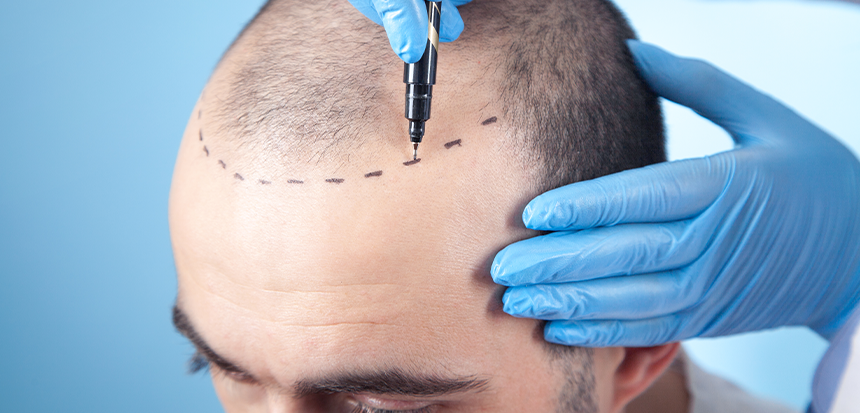
Sapphire blades are sharper and more durable compared to traditional steel blades, allowing for precise and minimally invasive incisions. Sapphire FUE is ideal for those aiming for a natural-looking hairline and dense hair transplantation.
This technique involves extracting individual hair follicles from the donor area, usually the back of the head, and transplanting them to bald or thinning areas. Sapphire tips expedite the healing process and reduce the risk of infection. Moreover, their use ensures a more organized and natural appearance of the transplanted area.
Sapphire FUE Hair Transplant offers several advantages. Firstly, the use of sapphire tips allows for much smaller and more precise incisions, leading to less trauma and faster recovery. Additionally, smaller incisions mean less scarring and reduced risk of infection.
Another significant advantage is the high precision provided by sapphire tips, allowing hair follicles to be transplanted more densely and uniformly. This results in a more natural and dense appearance of transplanted hair. Moreover, patients can return to their daily routines faster after this procedure.
Sapphire FUE Hair Transplant is suitable for both men and women experiencing hair loss. Ideal candidates have sufficient hair follicles in the donor area and specific areas of concentrated hair loss or thinning. Additionally, this method is suitable for individuals dissatisfied with previous hair transplant procedures or seeking denser hair restoration.
Sapphire FUE can be applied to anyone needing hair transplantation due to various reasons such as genetic hair loss, trauma, or hair loss after burns. However, it is important to undergo a detailed evaluation with a specialist before the procedure to determine suitability.
Sapphire FUE Hair Transplant is a multi-stage procedure. Initially, the donor area is shaved, and local anesthesia is applied to numb the area. Then, individual hair follicles are extracted using sapphire-tipped microblades. These follicles are carefully collected and prepared for transplantation.
In the next stage, small incisions are made in the recipient area where hair follicles are placed. Sapphire tips ensure great precision during this stage, promoting natural hair growth angles. The procedure typically lasts several hours, and patients are usually discharged the same day.
After Sapphire FUE Hair Transplant, adhering to specific care instructions is crucial to expedite healing and achieve optimal results. During the first few days, it's important to handle the recipient area carefully to avoid damage and refrain from strenuous physical activities.
It's essential to follow the doctor's instructions regarding washing the hair and using recommended hair care products. Additionally, protecting the scalp from direct sunlight and avoiding trauma to the head is necessary. Some crusting and redness may occur in the first few weeks, which is normal and usually resolves quickly. Regular follow-up appointments are recommended to monitor the healing process. Contact EMPCLINICS to schedule a consultation for the Sapphire FUE Hair Transplant procedure.
The recovery period after Safir FUE hair transplant varies from person to person, but generally, individuals can resume normal daily activities within a few days. Crusting and redness usually subside within a few weeks. New transplanted hair may shed within the first few months, but new and permanent hair growth should begin afterward. Full results can typically be seen between 8 to 12 months, depending on the characteristics of the transplanted area.
It is not recommended to swim in the sea or pool during the first 2 weeks after surgery. During this time, attention to hygienic conditions is necessary to protect the transplanted area from the risk of infection.